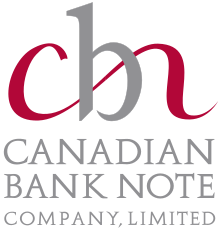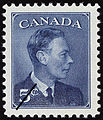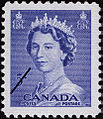
The Canadian dollar is the currency of Canada. It is abbreviated with the dollar sign $. There is no standard disambiguating form, but the abbreviations Can$, CA$ and C$ are frequently used for distinction from other dollar-denominated currencies. It is divided into 100 cents (¢).
The dollar has been the currency of The Bahamas since 1966. It is normally abbreviated with the dollar sign $, or alternatively B$ to distinguish it from other dollar-denominated currencies. It is divided into 100 cents.
The British West Indies dollar (BWI$) was the currency of British Guiana and the Eastern Caribbean territories of the British West Indies from 1949 to 1965, when it was largely replaced by the East Caribbean dollar, and was one of the currencies used in Jamaica from 1954 to 1964. The monetary policy of the currency was overseen by the British Caribbean Currency Board (BCCB). It was the official currency used by the West Indies Federation The British West Indies dollar was never used in British Honduras, the Cayman Islands, the Turks and Caicos Islands, the Bahamas, or Bermuda.

Security printing is the field of the printing industry that deals with the printing of items such as banknotes, cheques, passports, tamper-evident labels, security tapes, product authentication, stock certificates, postage stamps and identity cards. The main goal of security printing is to prevent forgery, tampering, or counterfeiting. More recently many of the techniques used to protect these high-value documents have become more available to commercial printers, whether they are using the more traditional offset and flexographic presses or the newer digital platforms. Businesses are protecting their lesser-value documents such as transcripts, coupons and prescription pads by incorporating some of the features listed below to ensure that they cannot be forged or that alteration of the data cannot occur undetected.
The Canadian twenty-dollar note is one of the most common banknotes of the Canadian dollar; it is the primary banknote dispensed from Canadian automatic teller machines (ATMs). The newest version, the Frontier Series polymer note, was released to the general public on November 7, 2012, replacing the banknote from the Canadian Journey Series.
De La Rue plc is a British company headquartered in Basingstoke, England, that produces secure digital and physical solutions to protect goods, trade and identities in 140 countries. It sells to governments, central banks and businesses. Its Authentication division provides Government Revenue Solutions, Brand Protection and ID Security Solutions, such as polycarbonate data pages for passports. Its Currency division designs and produces banknotes, secure polymer substrate and banknote security features. This includes security holograms, security threads and security printed products for central banks and currency issuing authorities. It is listed on the London Stock Exchange. It is the world's largest commercial printer of banknotes.

The Canadian one-hundred-dollar note is one of five banknotes of the Canadian dollar. It is the highest-valued and least-circulated of the notes since the $1000 note was gradually removed from circulation starting in 2000.
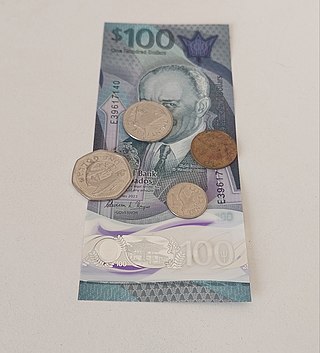
The dollar has been the currency of Barbados since 1935. Globally its currency has the ISO 4217 code BBD, however, unofficially in Barbados the International vehicle registration code BDS is also commonly used, a currency code that is otherwise reserved for Bangladesh outside Barbados. As such the present dollar has the ISO 4217 code BBD. The Barbadian dollar is divided into 100 cents.

Canada has an extensive history with regard to its currencies. Prior to European contact, indigenous peoples in Canada used items such as wampum and furs for trading purposes, which continued when trade with Europeans began. During the period of French colonization, coins were introduced, as well as one of the first examples of paper currency by a western government. During the period of British colonization, additional coinage was introduced, as well as banknotes. The Canadian colonies gradually moved away from the British pound and adopted currencies linked to the United States dollar. With Confederation in 1867, the Canadian dollar was established. By the mid-20th century, the Bank of Canada was the sole issuer of paper currency, and banks ceased to issue banknotes.

Banknotes of the Canadian dollar are the banknotes or bills of Canada, denominated in Canadian dollars. Currently, they are issued in $5, $10, $20, $50, and $100 denominations. All current notes are issued by the Bank of Canada, which released its first series of notes in 1935. The Bank of Canada has contracted the Canadian Bank Note Company to produce the Canadian notes since then. The current series of polymer banknotes were introduced into circulation between November 2011 and November 2013. Banknotes issued in Canada can be viewed at the Bank of Canada Museum in Ottawa.
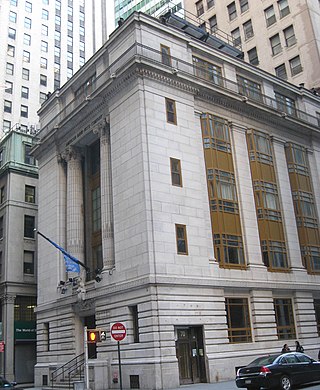
ABCorp is an American corporation providing contract manufacturing and related services to the authentication, payment and secure access business sectors. Its history dates back to 1795 as a secure engraver and printer, and assisting the newly formed First Bank of the United States to design and produce more counterfeit resistant currency. The company has facilities in the United States, Canada, Australia, and New Zealand.

The 1935 Canadian banknote series is the first series of banknotes of the Canadian dollar issued by the Bank of Canada. They were first circulated on 11 March 1935, the same day that the Bank of Canada officially started operating. Two sets of banknotes were printed for each denomination, one in French for Quebec, and one in English for the rest of Canada. This is the only series issued by the Bank of Canada with dual unilingual banknotes. This series was followed by the 1937 Canadian banknote series.
The 1937 Canadian banknote series is the second series of banknotes of the Canadian dollar issued by the Bank of Canada. The banknotes were issued into circulation on 19 July 1937, at which time the Bank of Canada began gradually removing banknotes from the 1935 series from circulation. The $1000 banknote was issued several years later, as it was primarily used by chartered banks, which had a sufficient supply of the 1935 Series $1000 banknote.

Canadian Landscape is the third series of banknotes of the Canadian dollar issued by the Bank of Canada, first circulated in 1954. The banknotes were designed in 1952 following the accession of Elizabeth II to the throne after the death of her father George VI. The banknote designs differed significantly from the preceding 1937 Series banknotes, though the denomination colours and bilingual printing were retained. This series was followed by the 1969 Scenes of Canada series.
Scenes of Canada is the fourth series of banknotes of the Canadian dollar issued by the Bank of Canada. It was first circulated in 1970 to succeed the 1954 Canadian Landscape series and was followed by the 1986 Birds of Canada banknote series. This was the last series to feature a $1 bill, which was replaced by a $1 coin known as the loonie in 1987, although both the $1 bill and the loonie were produced concurrently for 21 months, from June 1987 to April 1989.
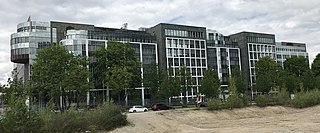
Giesecke+Devrient is a German company headquartered in Munich that provides banknote and securities printing, smart cards, and cash handling systems.

Birds of Canada is the fifth series of banknotes of the Canadian dollar issued by the Bank of Canada and was first circulated in 1986 to replace the 1969 Scenes of Canada series. Each note features a bird indigenous to Canada in its design. The banknotes weigh 1 gram with dimensions of 152.40 by 69.85 millimetres. It was succeeded by the 2001 Canadian Journey series.
Harrison and Sons was a major worldwide engraver and printer of postage stamps and banknotes.
Fidelity Printers and Refiners (FPR) is Zimbabwean security printing and gold refinery company wholly owned by the Reserve Bank of Zimbabwe. The company was established in 1966. FPR operates from a printing and gold refinery plant located in Msasa Industrial area in Harare and a coin minting facility in Bulawayo.
Four banknotes of the Canadian dollar have been commemorative issues. The first was issued in 1935 to the silver jubilee of the accession of George V to the throne of the United Kingdom, the only $25 banknote ever issued by the Bank of Canada. The second commemorative banknote was the Centennial $1 banknote issued in January 1967 to commemorate the Canadian Centennial. The third was issued in September 2015 to commemorate Elizabeth II becoming the longest-reigning monarch of the United Kingdom and Canada. In 2017, the Bank of Canada released a commemorative $10 banknote for Canada's sesquicentennial, which was available by Canada Day.
